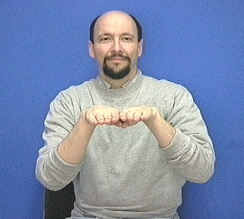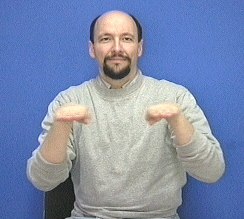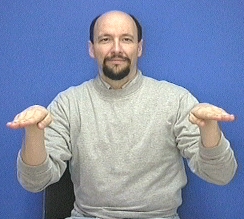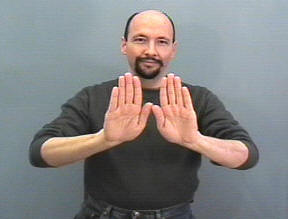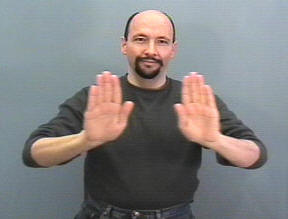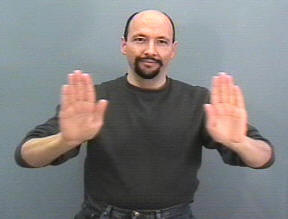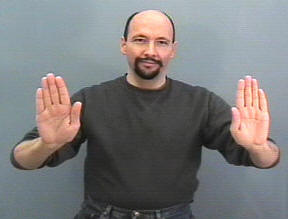American Sign Language: "Classifier:
B"
When we use the phrase "classifier B" what we are talking about is the fact that we can use "flat hands" (which are somewhat like the fingerspelled letter "B") to represent things that can generally be categorized as (or placed in the "class" of) being "flat." For example, things like: paper, surfaces, tables, countertops, shelves, etc.
ere is the sign for SHELF (or if done a little lower it means FLOOR).
The signs for WALL, DOOR, and/or SHELF (and other similar signs) almost certainly started out as descriptions of what the things looked like (the shape, placement, or usage). Then over time the movements became widespread, condensed, and so common that a person could do the sign "SHELF" and it would be recognized instantly by other signers.
For example, h
If you do the sign for WALL it is just a "sign" (a lexicalized classifier actually).
If you were use those flat handshapes to do that sign bigger, smaller, at an angle, multiple times, or modify it in some other way to depict (show) additional details about the characteristics of the shelf -- you would be using a classifier "B." (Note: Some people call classifiers "depictive verbs.").
CL-B: "Something large (and relatively flat) moving forward"
The above sign could be used to show the forward movement of a train, trolley, barge, battleship, a drag-racer, etc.
WALL:
Also see: WALL
However, if you modify the sign for WALL to show the characteristics of your wall (big, curved, slanted, etc.) the sign becomes a classifier and is more specific than just a sign for "wall."
(Sure, a classifier is still a sign but it is a special type of sign . Sort of like a "mom" is still a female, but a more specific type of female.)
Also see: DOOR
You can learn American Sign Language (ASL) online at American Sign Language University ™
ASL resources by Lifeprint.com © Dr. William Vicars
